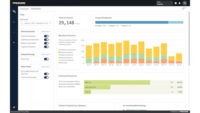The number zero dates to Mesopotamia around 3 B.C. and since then the mathematical zero and the philosophical notion of nothingness have challenged cultures throughout history. But zero serves a fundamental purpose by helping us to understand that we can use math to think about things that have no counterpart in a physical lived experience. Many institutions have argued that zero will be a critical number in establishing public policy this century.

One reason is that this century must be one of several epochal transitions in which our outlooks and outcomes depend on our ability to manage to design and manage to zero, in carbon emissions, security vulnerability and fatal traffic accidents. But with each new century comes new thinking, new tools and new insight—where our abilities to manage a world of zero opportunities and constraints has strong historical foundations.
The energy transition from fossil fuels to renewables will be the most critical movement to a new zero reality. Throughout human history we have transitioned to and through a variety of energy sources, from biomass energies to animate power to fossil fuels. What is unique and challenging about our current transition is the need to plan and design to a specific constraint.
“We haven’t seen anyone say we will go back to the low energy costs of hydrocarbons. Clients want help to transition.”
Constraints have been at the core of the engineering mindset over the last 200 years. Regardless of the project or opportunity, time, money, functionality, and public policy have produced borders for engineers to design within. Any real-world scenario has constraints that make or break our performance potential.
However, when it comes to energy, waiting to fully define all constraints could produce greater risk.
Traffic deaths are another zero-frontier confronting transportation engineers. Its achievement is less distant and more palpable in our daily lives.
Although safety is the top priority of the U.S. Department of Transportation, and safety as a policy goal has been longstanding, the historic number of roadway fatalities in 2020 (while Americans drove less in 2020, an estimated 38,680 people died in crashes) illustrate the scale of the problem.
The Federal Highway Administration (FHWA) has numerous policy initiatives to advance and implement a vision of zero deaths and serious injuries on the Nation’s roads. To support this vision and policy goals, FHWA continues to work closely with state and local partners to advance a safety culture and a safe system approach. Programs like Road to Zero, Toward Zero Deaths, Vision Zero, and ITE’s Vision Zero strive for the only acceptable number—zero. We have arrived at an era in which advances in automotive technology combined with our ability to proactively design for safety makes the likelihood of zero deaths a realistic goal.
A recent cyber-attack on the Oldsmar, Florida water treatment plant demonstrates the growing threat to critical infrastructure. As reporter Nicole Perlroth writes in This Is How They Tell Me The World Ends: The Cyber-Weapons Arms Race, it is now easier for a rogue actor or nation-state to sabotage the software embedded in the Boeing 737 Max than it is for terrorists to hijack planes and send them crashing into buildings. Twenty years ago, the major concern and threat was the unsecured gate or downed fence around the water distribution pump station.
The concern in 2021 is the passing van at the physically secured water treatment plant doing a “digital drive-by” of a potential target. Like carbon emission reductions, cyber-attacks are a global phenomenon in which achieving zero critical infrastructure vulnerabilities will require a global engineering effort. Like zero traffic deaths, achieving zero shutdowns of water treatment plants is the only acceptable answer.
In a complex, interdependent and sometimes chaotic world, engineering practice must continue to excel in problem solving and creative synthesis. Never have our problem-solving skills been focused so intensely on zero. For engineers to fulfill a noblesse oblige to society this century, we must plan, design and manage around objectives and constraints that have never been attempted before in human history.
Maybe zero only represents the urgency society feels. Or how bad we believe life will be if we don’t solve these energy, safety and security problems so that that they no longer loom large in public consciousness.
If engineers keep applying their skills and ingenuity and come close to achieve our goals, perhaps zero will be relaxed and reduced to a low or near-zero number—and near-zero will replace zero as the constraint to which we must design.
Steven D. Sanders, P.E., D. Eng., is Dallas/Ft. Worth District Director with Burgess & Niple and can be reached at Steve.Sanders@burgessniple.com.





Post a comment to this article
Report Abusive Comment